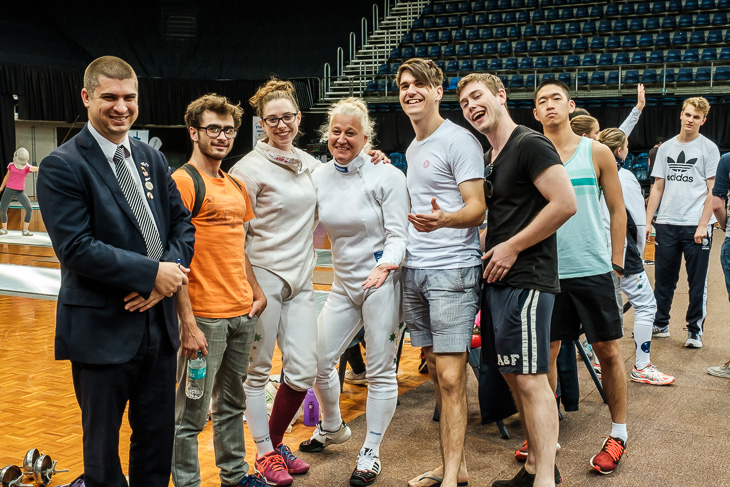It’s a seductive sport. Three weapons – epee, foil, sabre – with varying rules around giving way and valid contact points, but essentially it’s the same game. Hit your opponent before they hit you.
The Athlete –
The Athlete started playing at high school. Like many millennials who play the sport, she says she was influenced by the 1998 remake of The Parent Trap. Fencing parents think Lindsay Lohan has a lot to answer for.
At first I didn’t get it. I come from a netball and AFL background. A season of softball gave me a passing knowledge of the nine-innings game but fencing was way outside my sporting experience. Now I can’t miss a competition, following results online and texting for updates when the website is slow.
The Athlete started with foil, the lightest weapon, with a target area confined to the torso and complex rules about who wins the point if both opponents hit simultaneously; something about who has the attack. I’ve been watching for nine years now and I still don’t get it. I used to yell when my kid’s light went off, only to be embarrassed when the ref awarded the point to her opponent after a flurry of gestures and explanations in mangled french.
Now she fences epee, the heaviest weapon. The whole body is a valid target and if there’s a simultaneous hit both competitors are awarded a point. It’s a weapon of intense strategy which rewards patience and courage in equal measure. Wait, wait, wait, wait – bounce, bounce, forward, back – go!
The Athlete showed aptitude from the moment she picked up a weapon. She’s smart and patient and is gifted with Federer-like hand-eye coordination. That’s a good start. Add good coaching and a solid training schedule and you’ve got a competitor. She’s won a few medals. She’d like to win a few more. Which is why she’s in Europe now, training and competing with the world’s best.
The Parent –
After a few years on the sidelines I put my hand up to help at competitions. I started cooking sausages and by the end of that season was running the canteen. Now I’m the (very reluctant) acting treasurer for the state association. I take photos and empty bins and drive officials around when needed. Sometimes I am the official. Of course, what I really want to do is write stories about the sport. There are a couple in the pipeline.
From its heyday in the post-World War II era, when champion swordsman Ivan Lund carried the Australian flag at the Tokyo Olympics opening ceremony in 1964, fencing now struggles to remain competitive at the international level. Its annual funding from the Federal Government is around $35,000. That doesn’t go far. So when the Australian Fencing Team travels to Asia and Europe to compete the athletes fund themselves. In fact they chip in to fund the coaches as well. It’s a marginal sport in this country, running on the smell of an oily rag and the sweat of volunteers.
But I love it. I love it because it welcomes all comers. I love it because its elite athletes are strong and graceful and cunning and merciless. I love it because it blurs gender and age barriers. On day one of the national championships in Canberra last year, there were young fencers with braces on their teeth and veterans with braces on their knees; all doing weapons check together, laughing and groaning and just happy to be there.
So if I can help out with the tongs or the keyboard I’m happy to do it. Whatever it takes to keep me in the room.
For the record
The Athlete did OK in Stockholm. Won her first direct elimination bout and then proceeded to be defeated by the eventual silver medalist. In her words:
I was destroyed by the Estonian girl 15:3But at the same time am grateful to have had the privilegeIt was so beautifulThere was nothing for me to doI got two doubles and one singleI’m still in shock from how good she is


